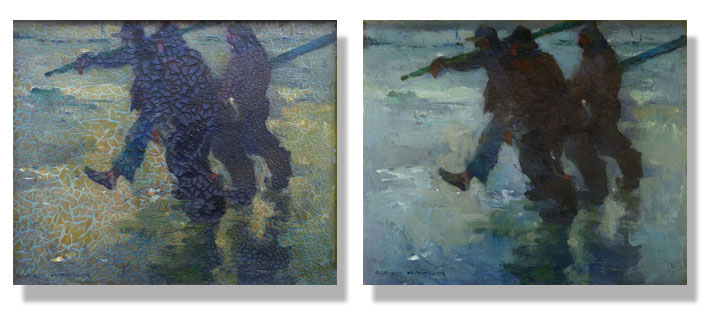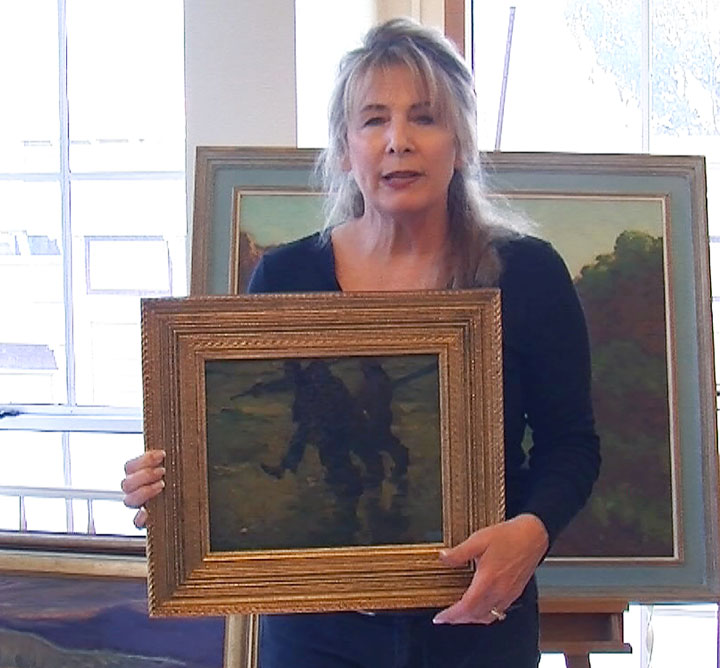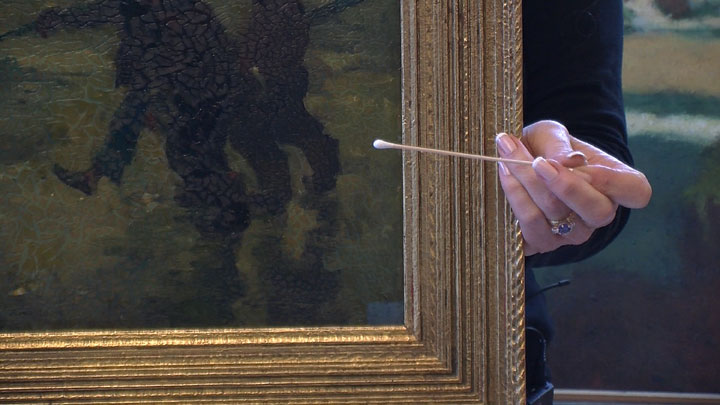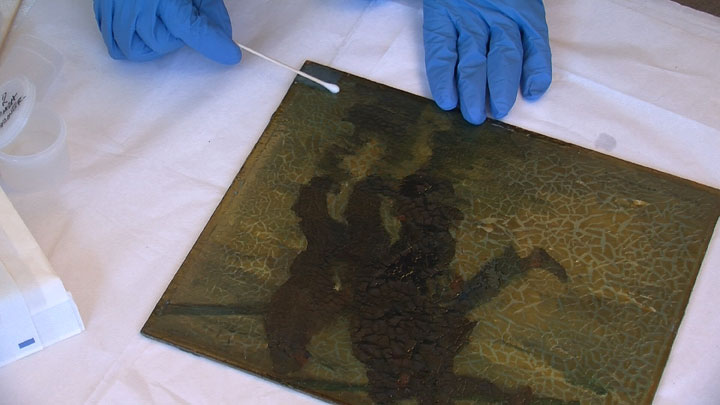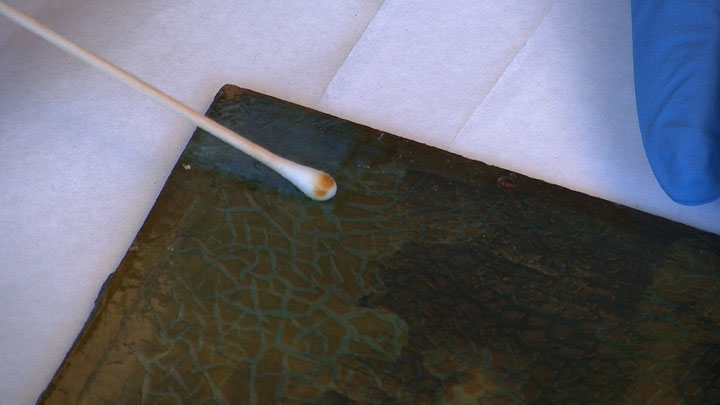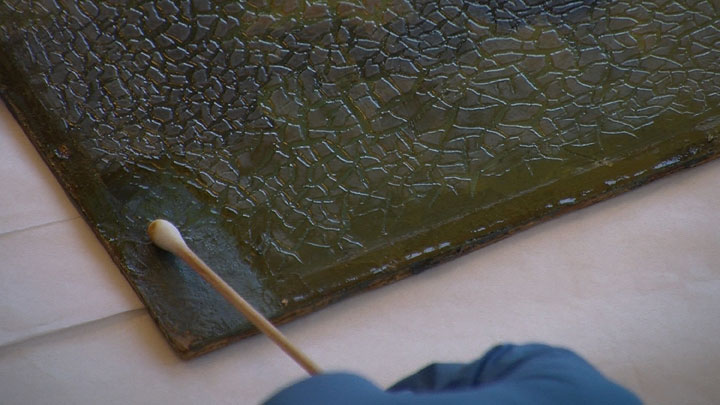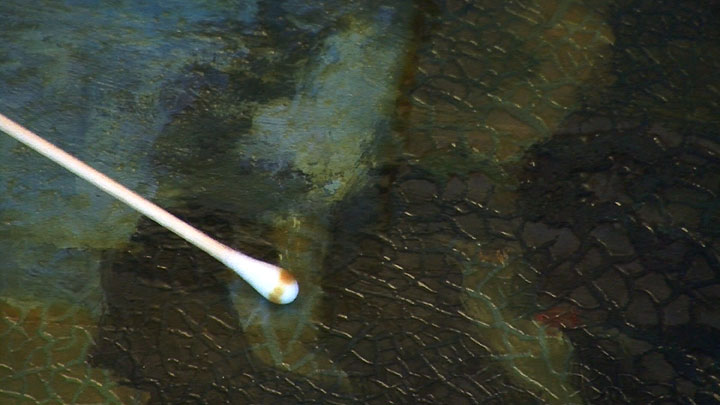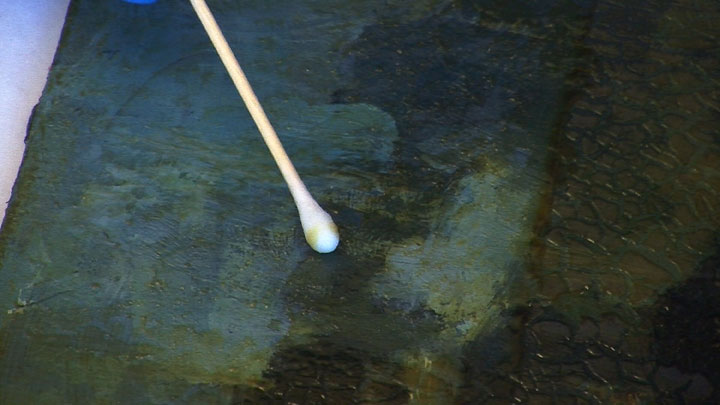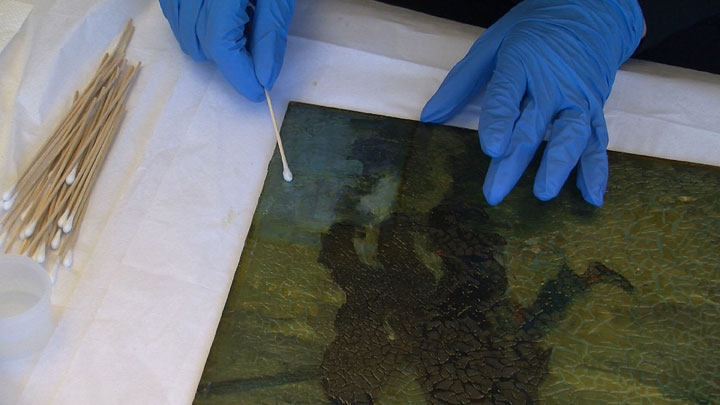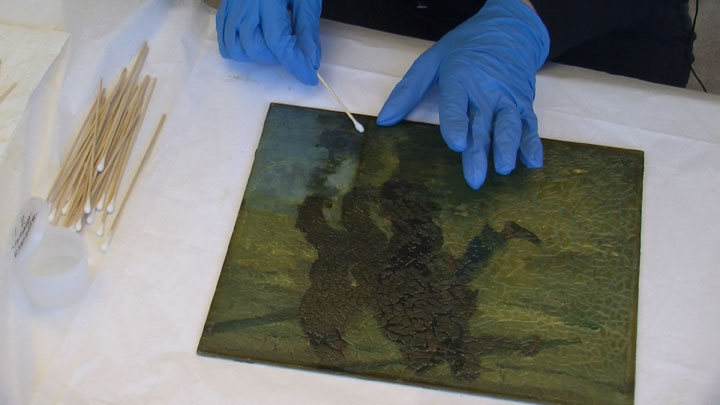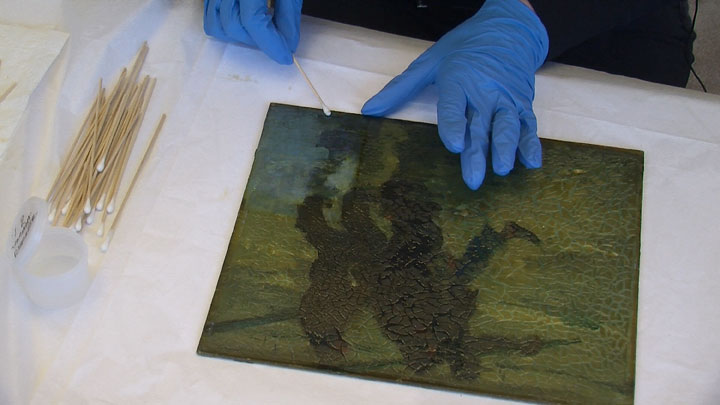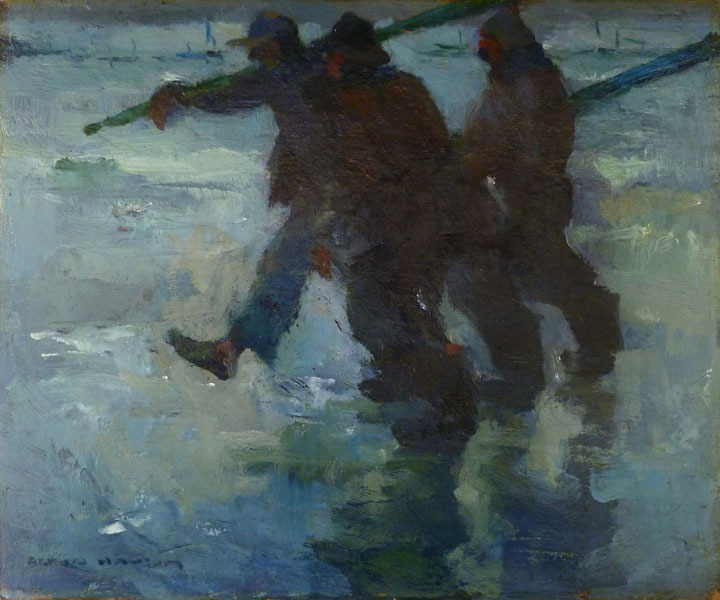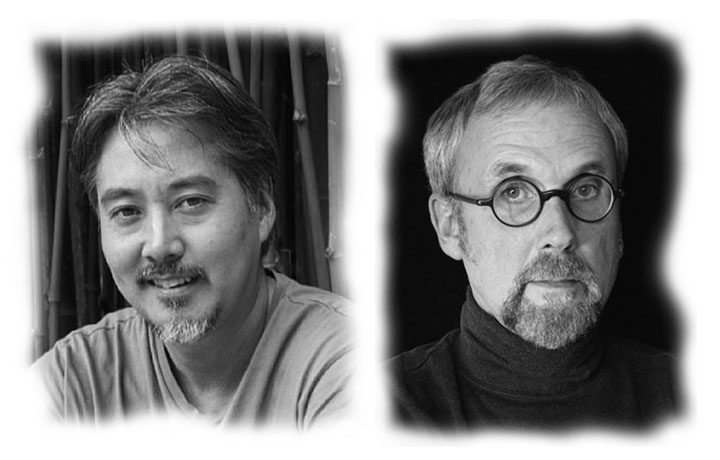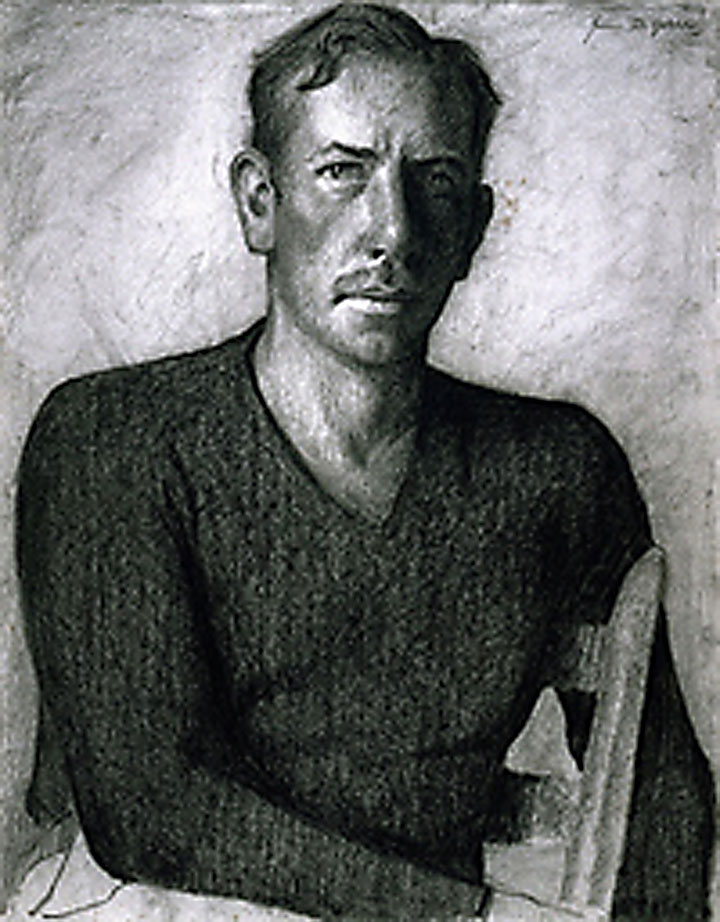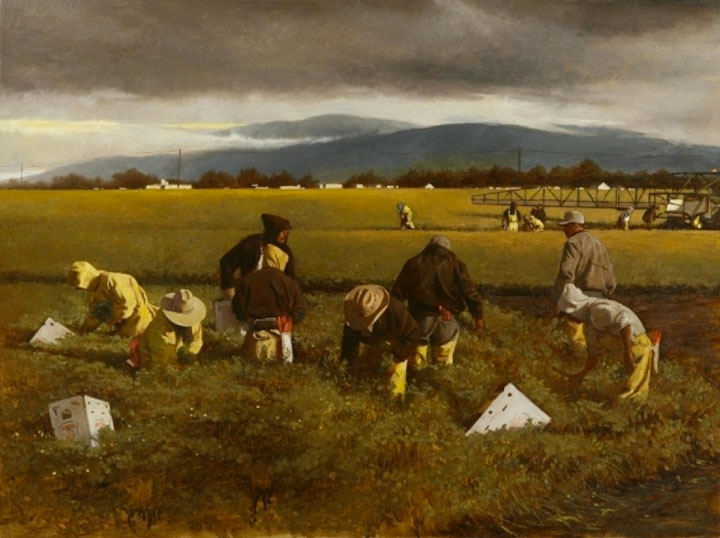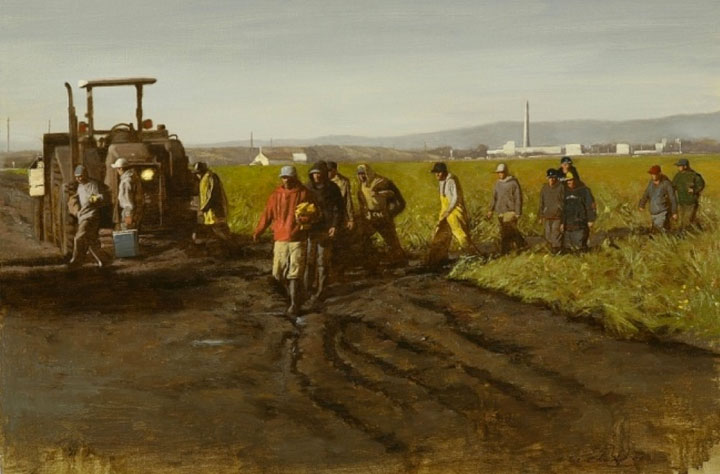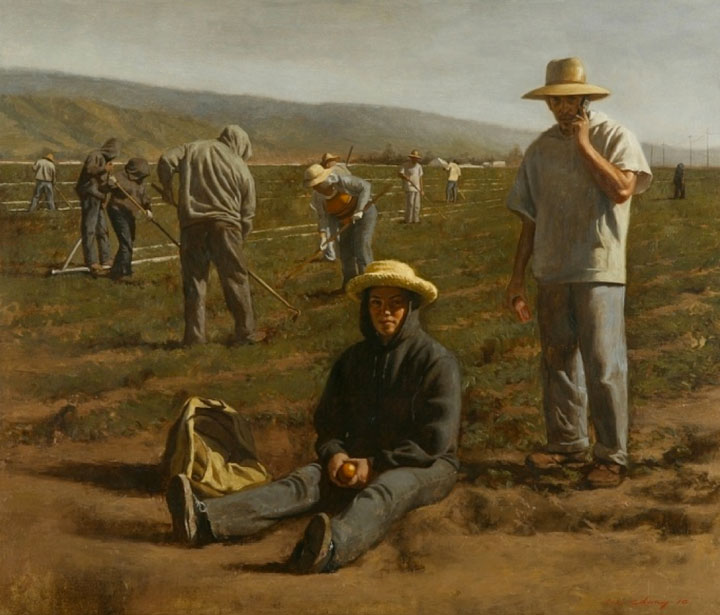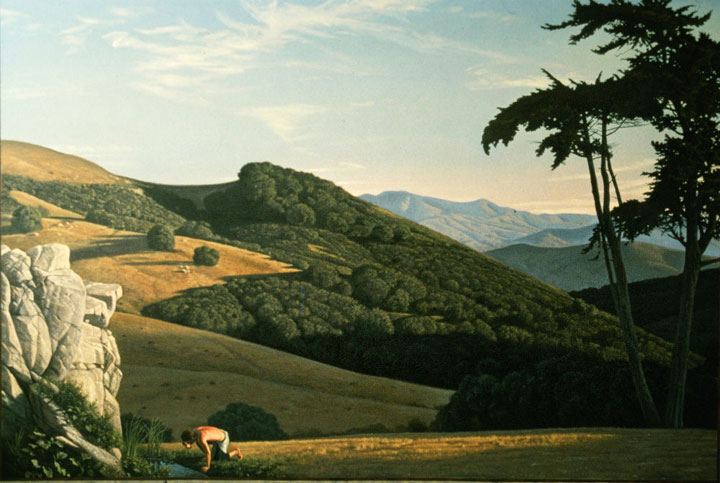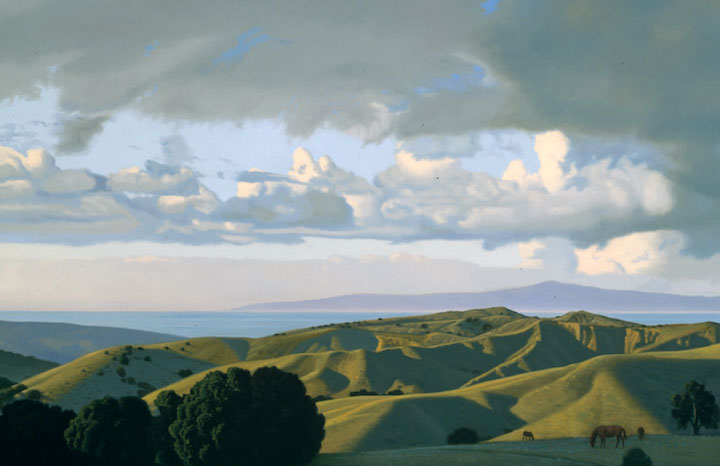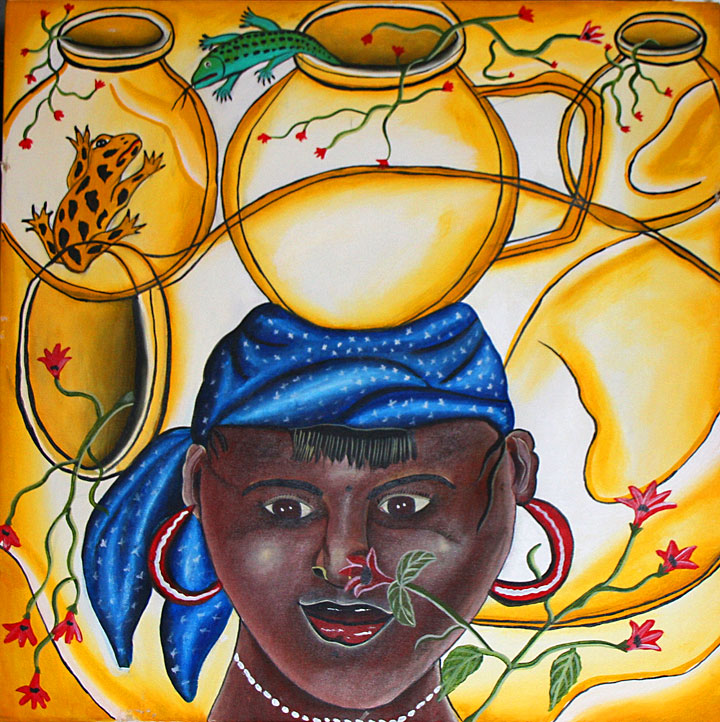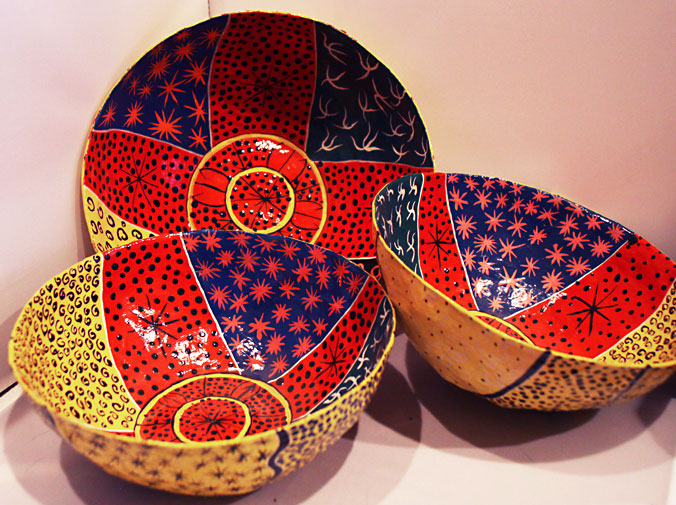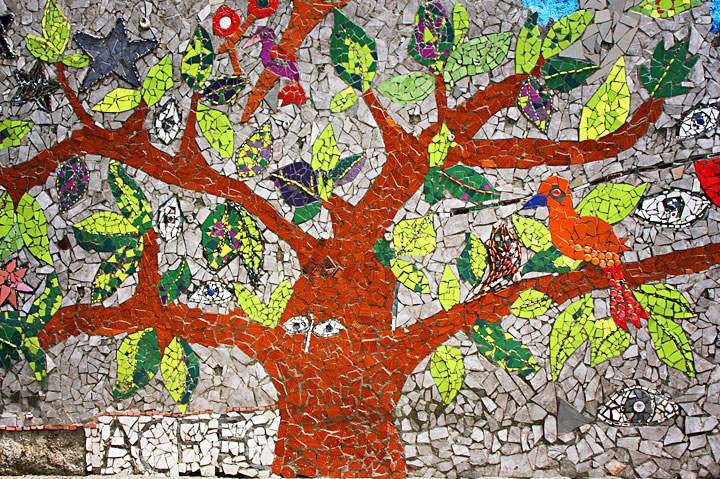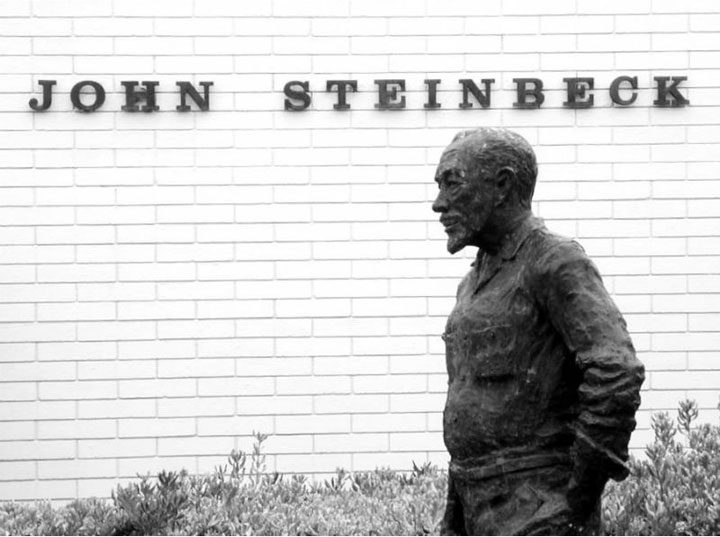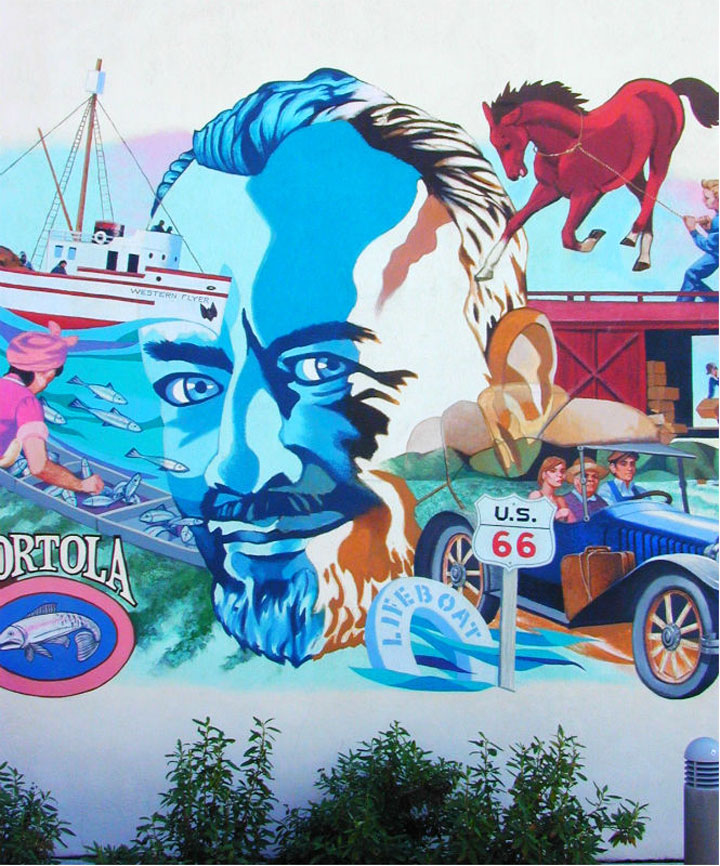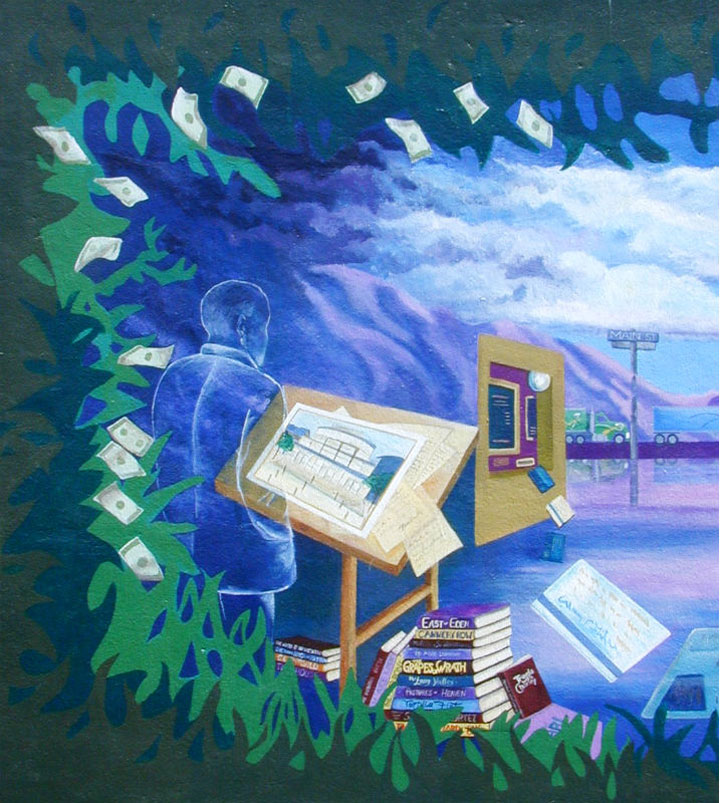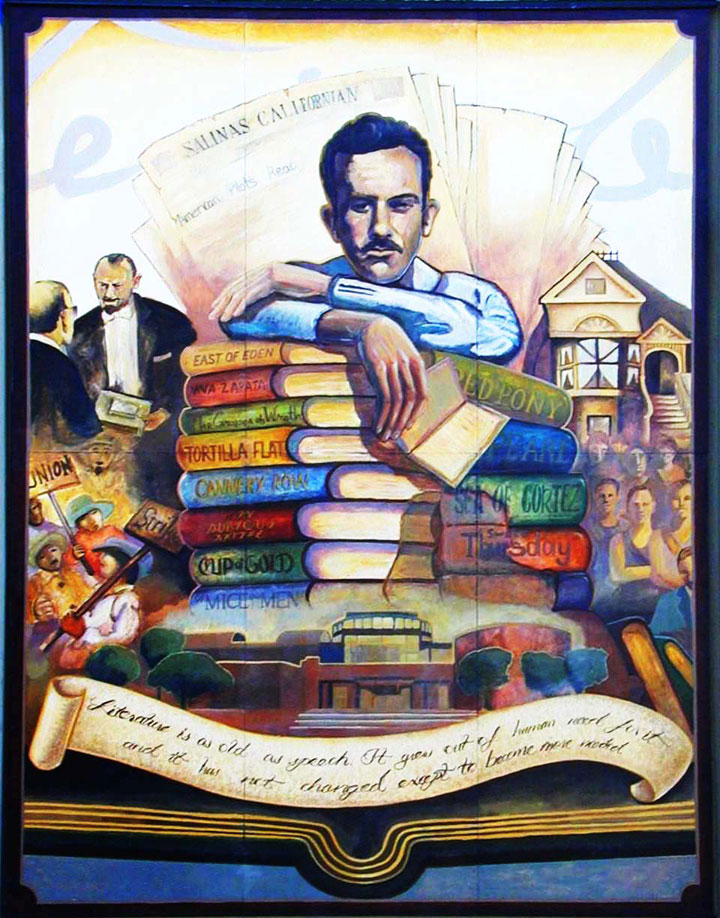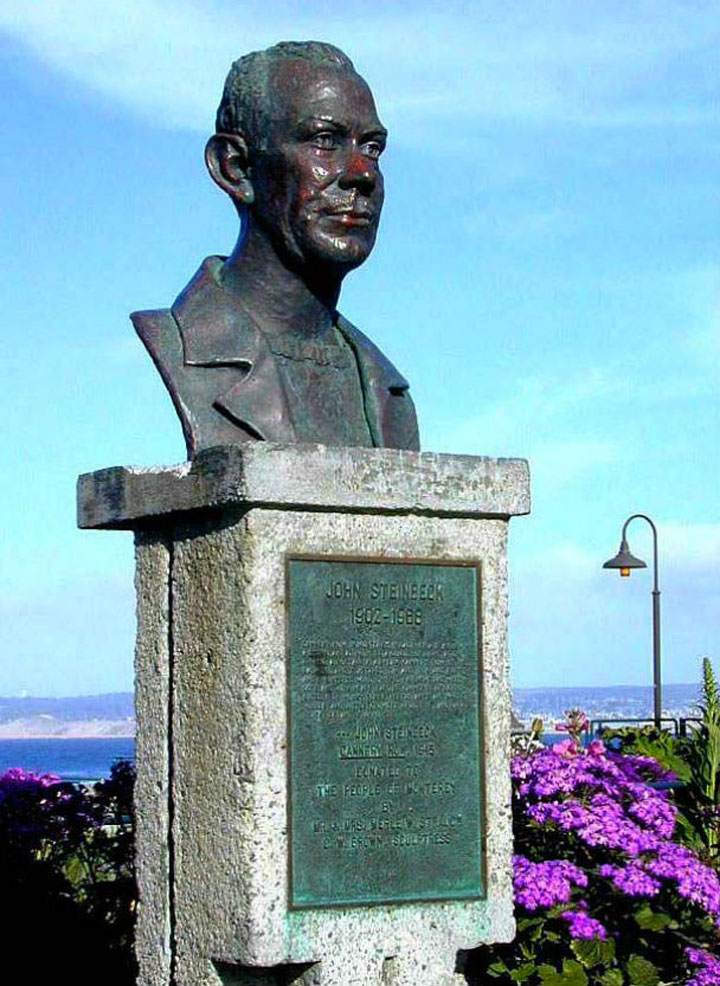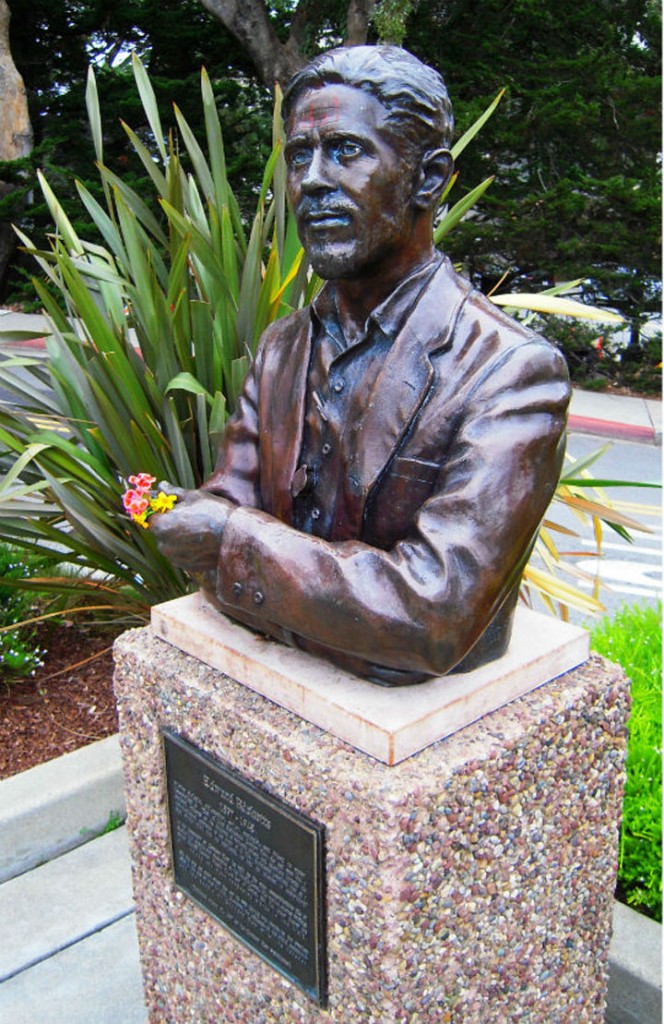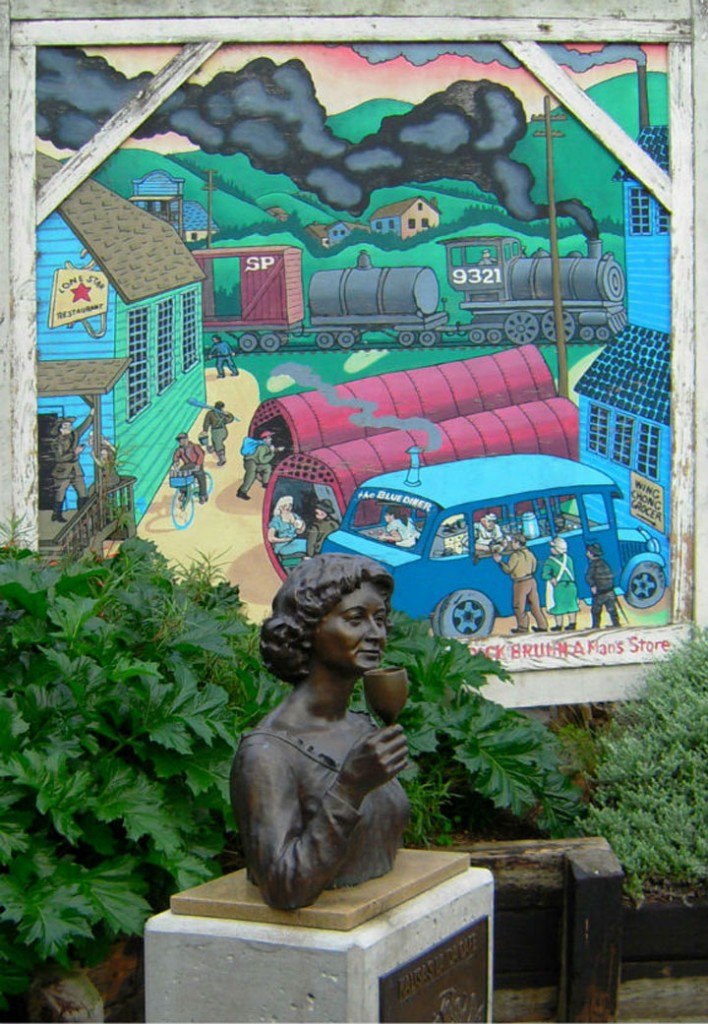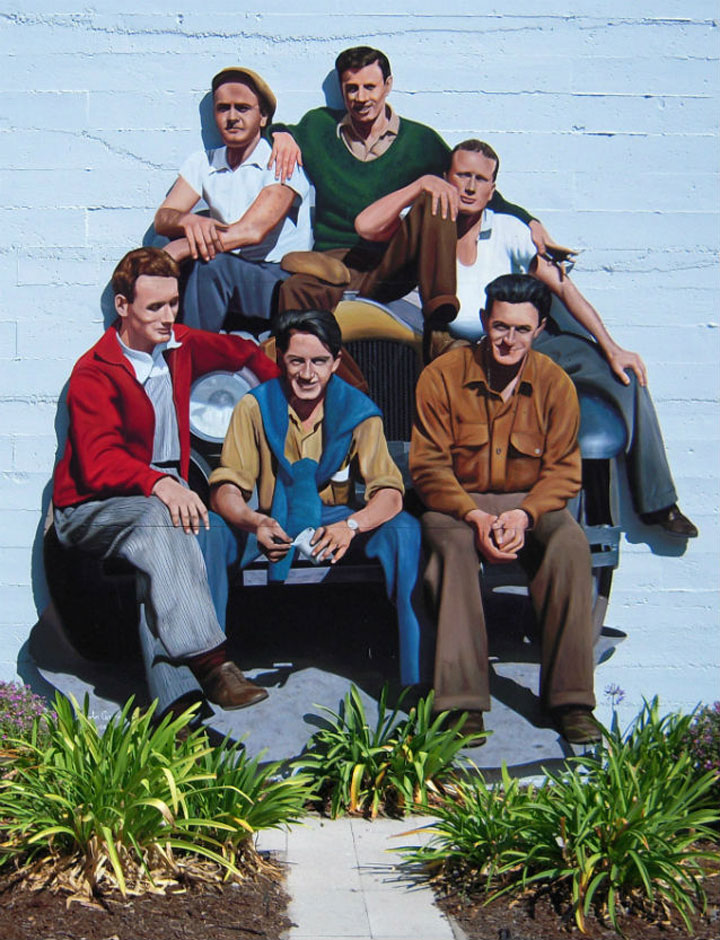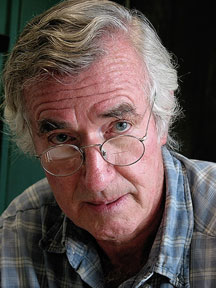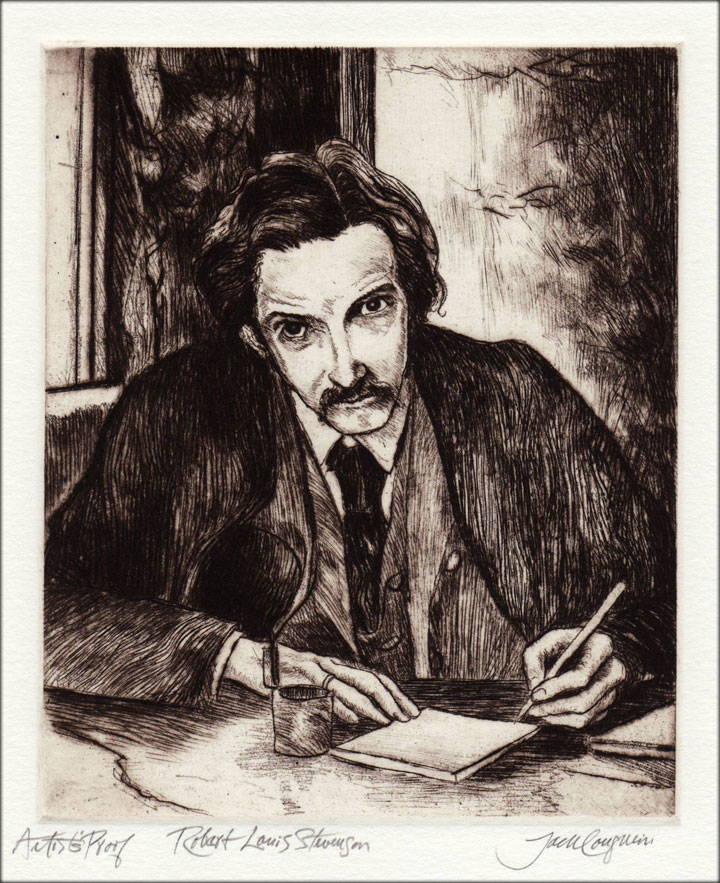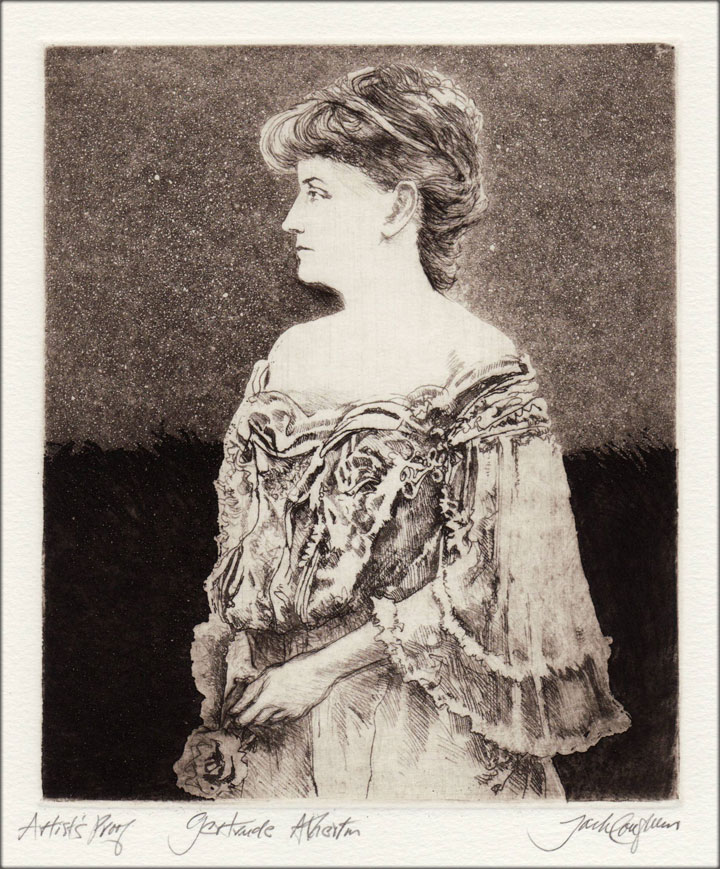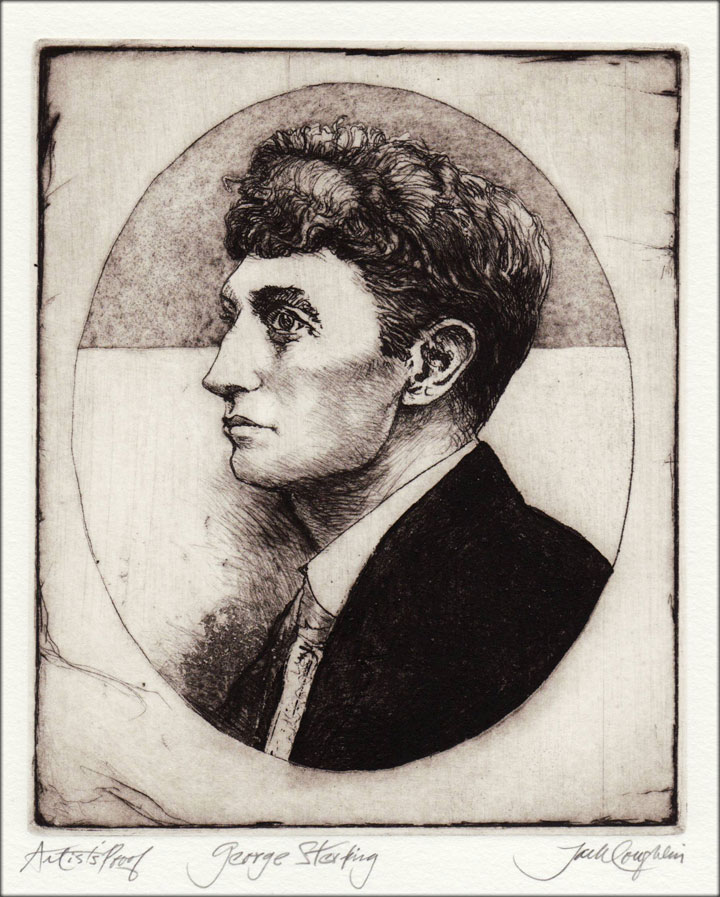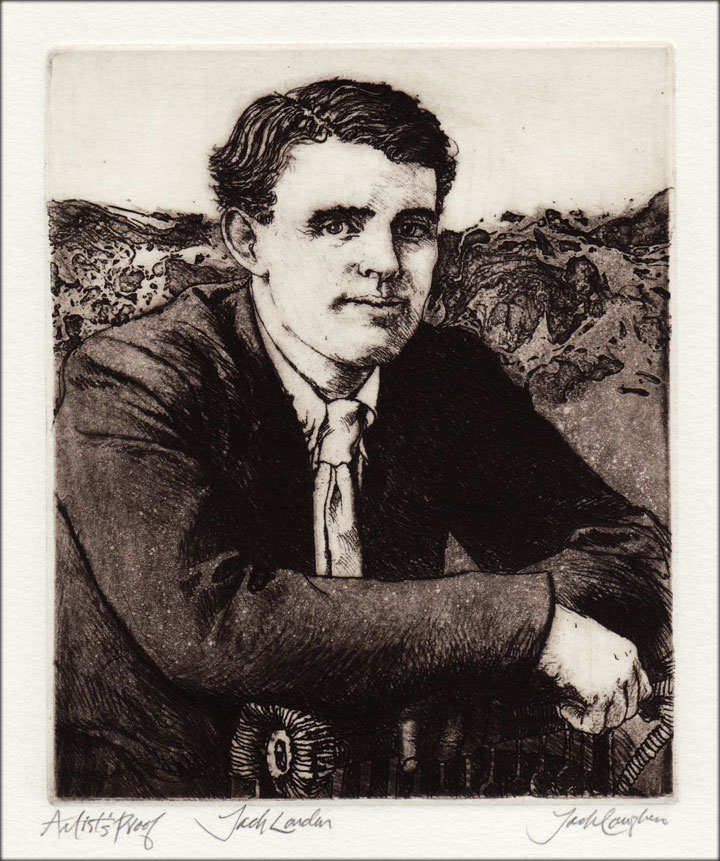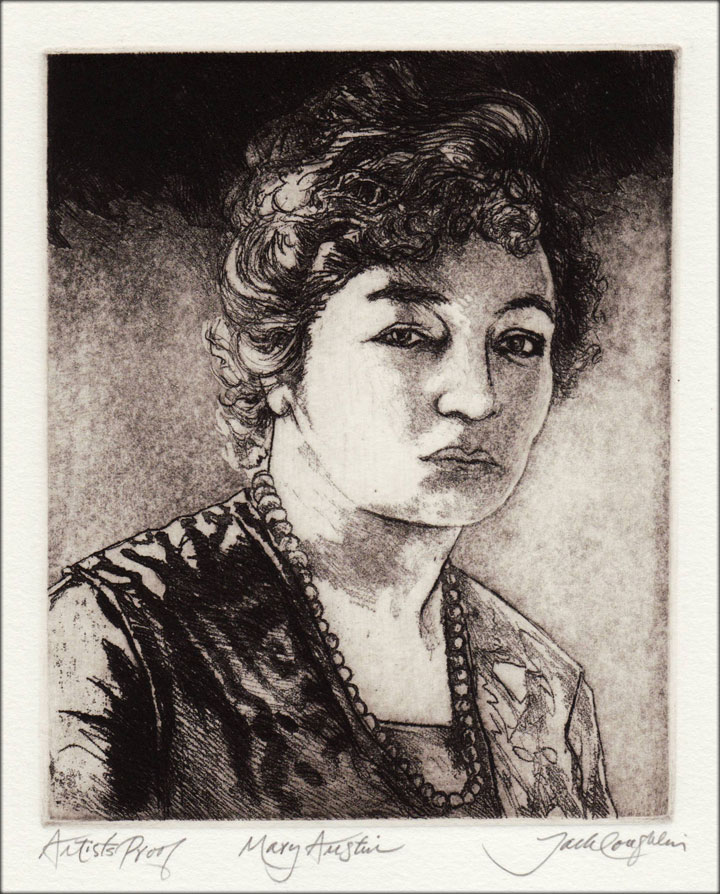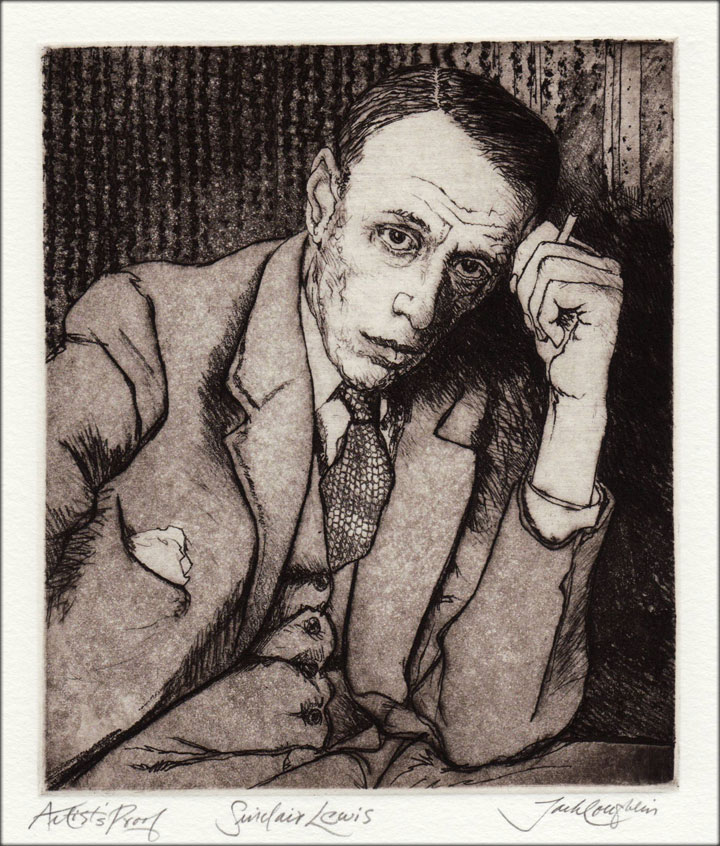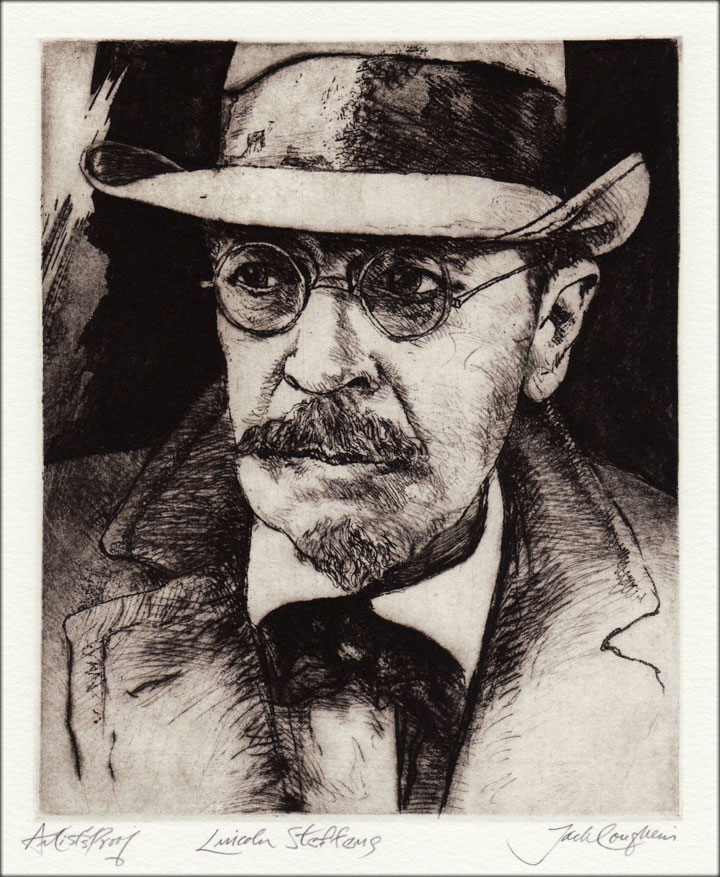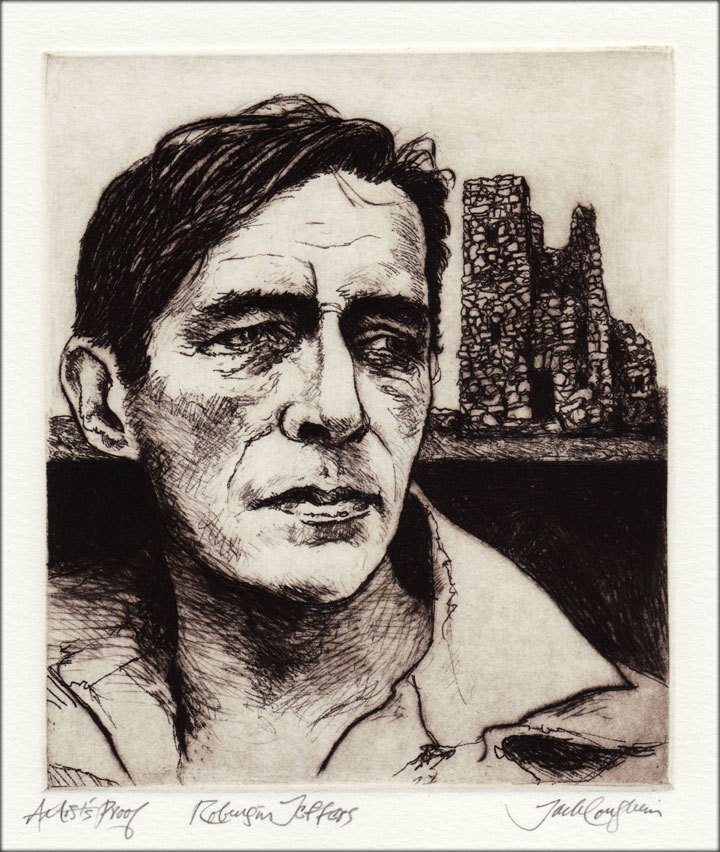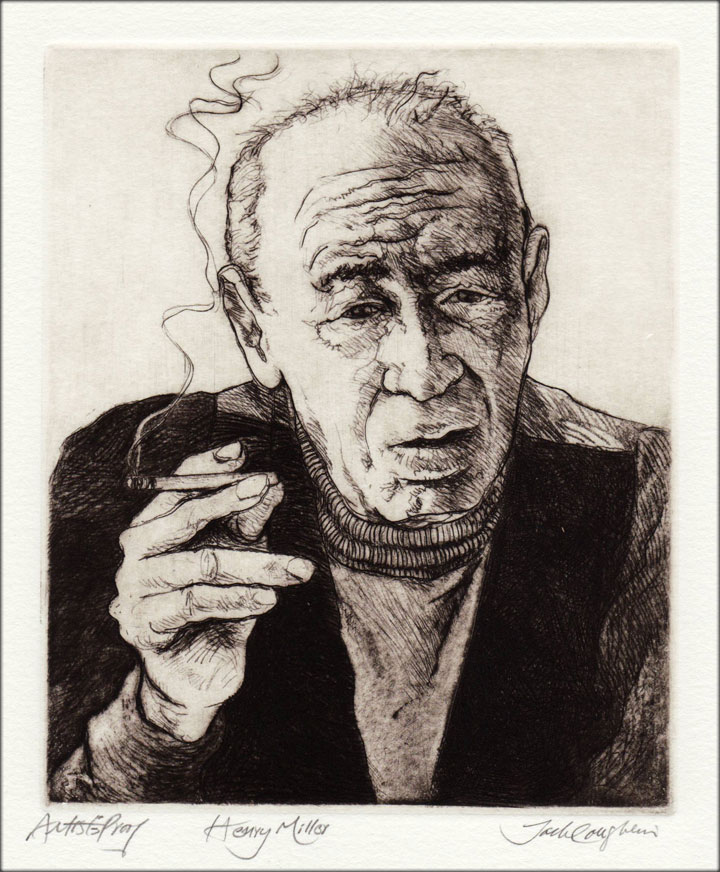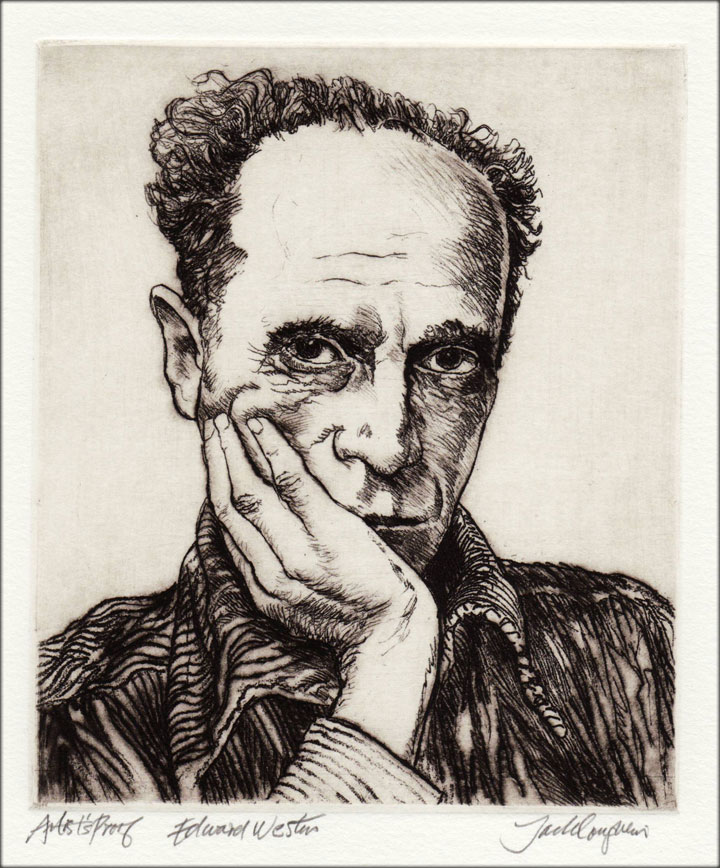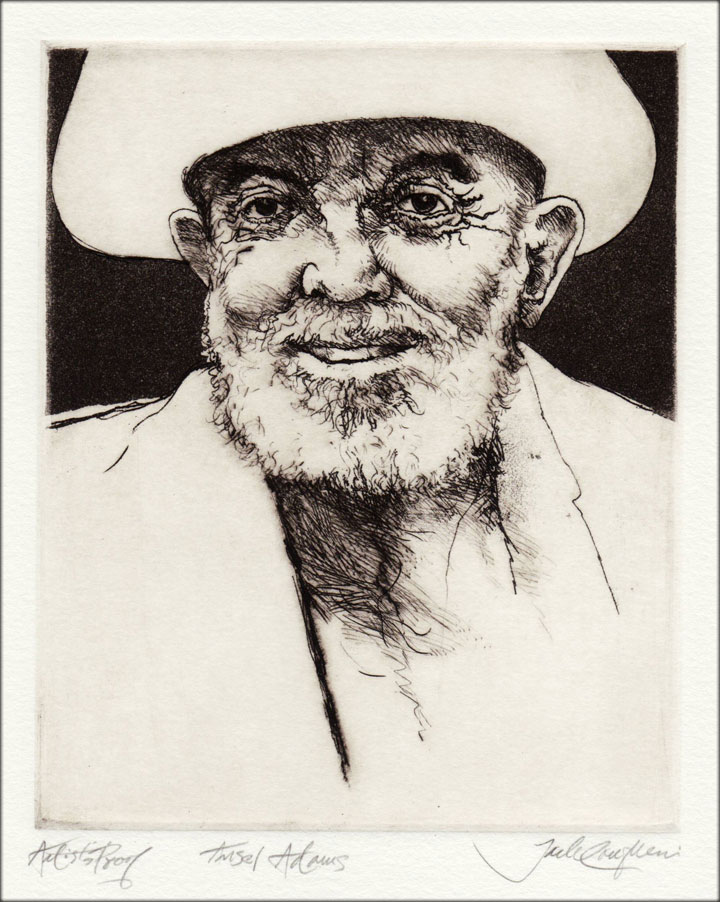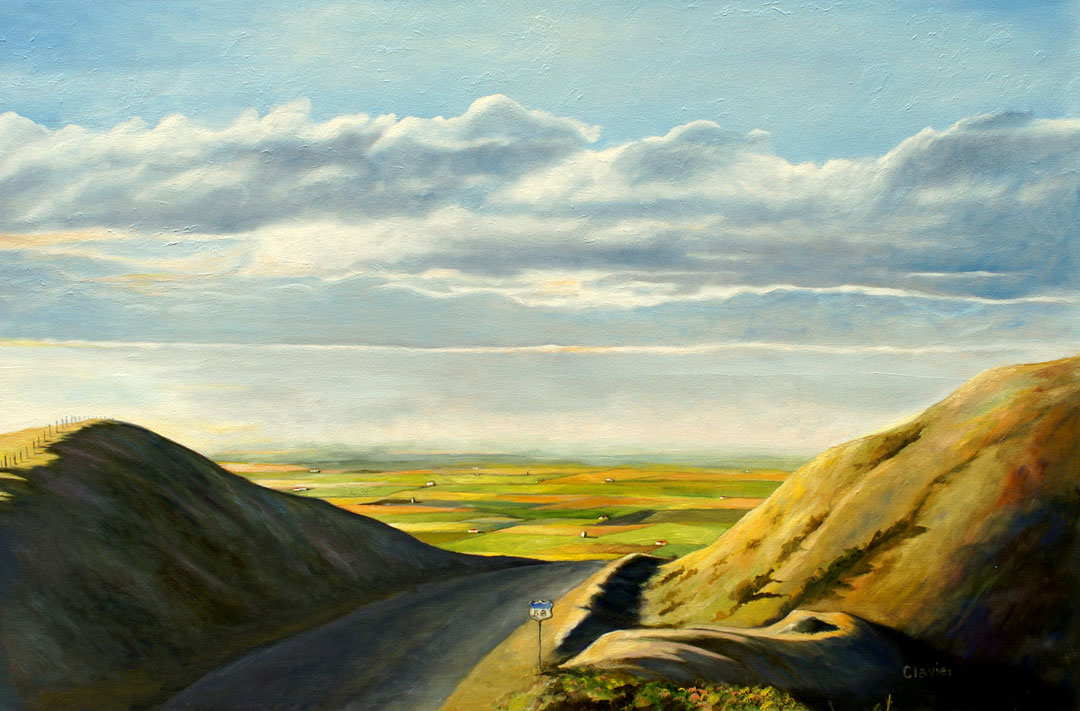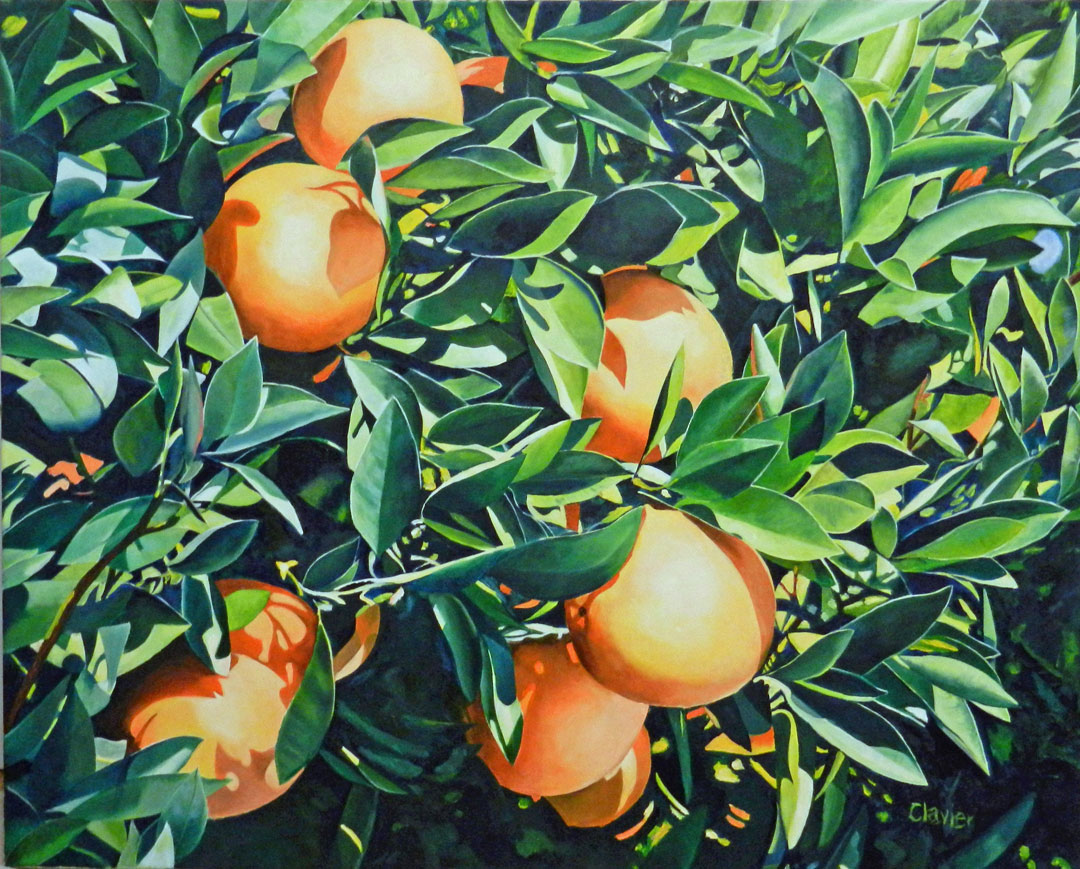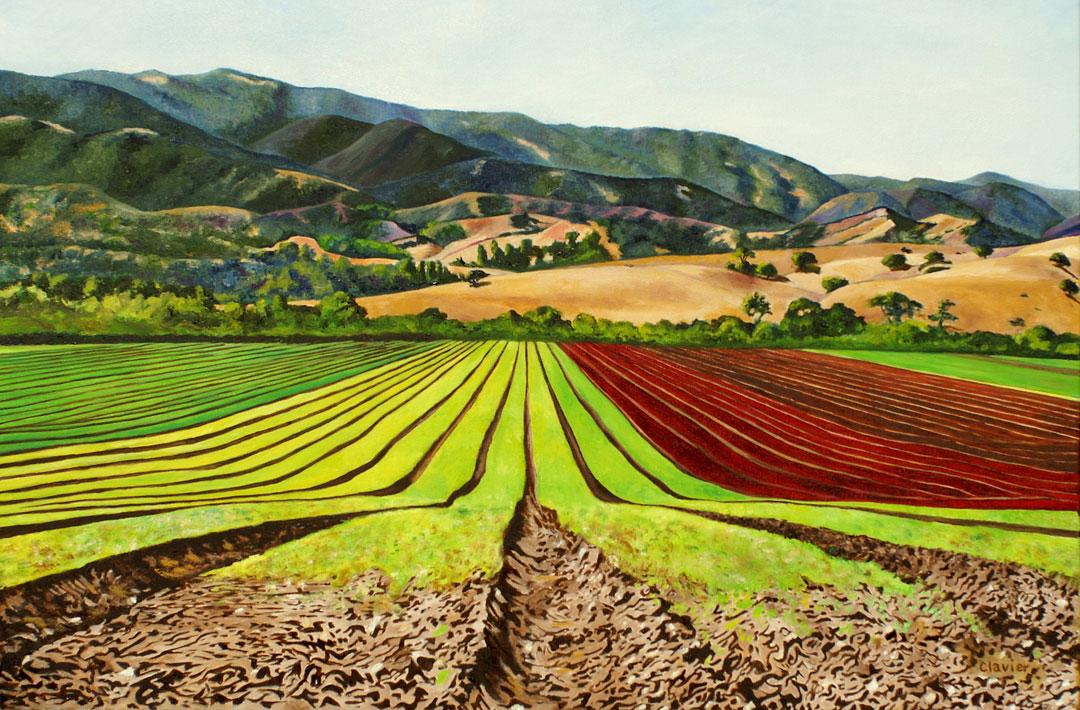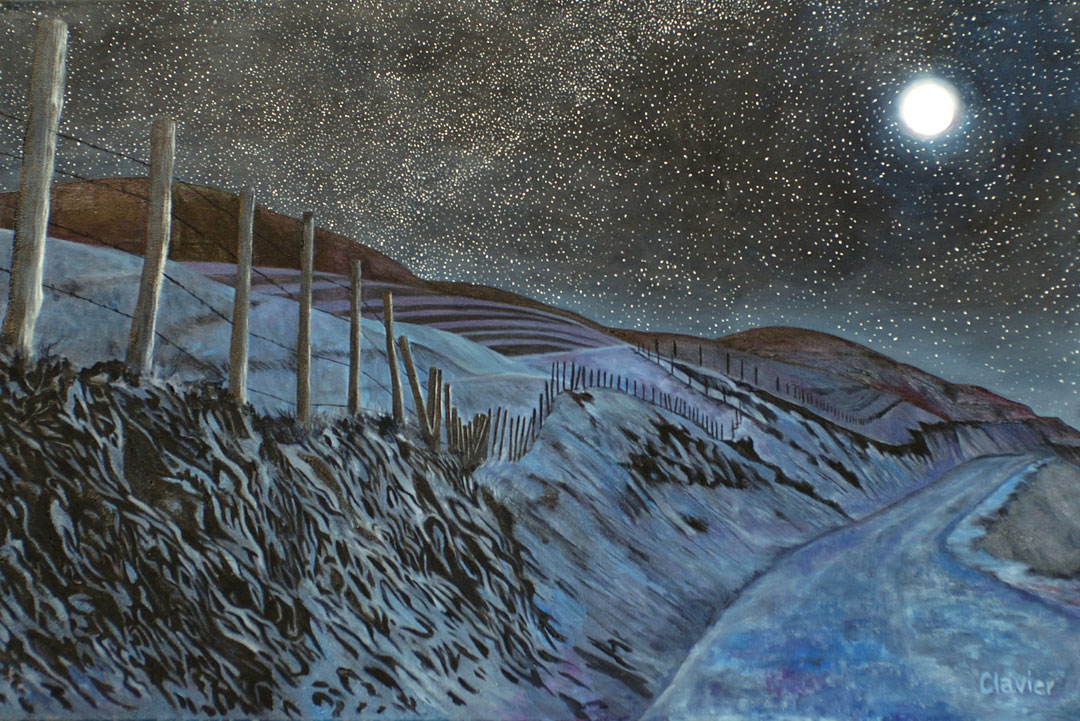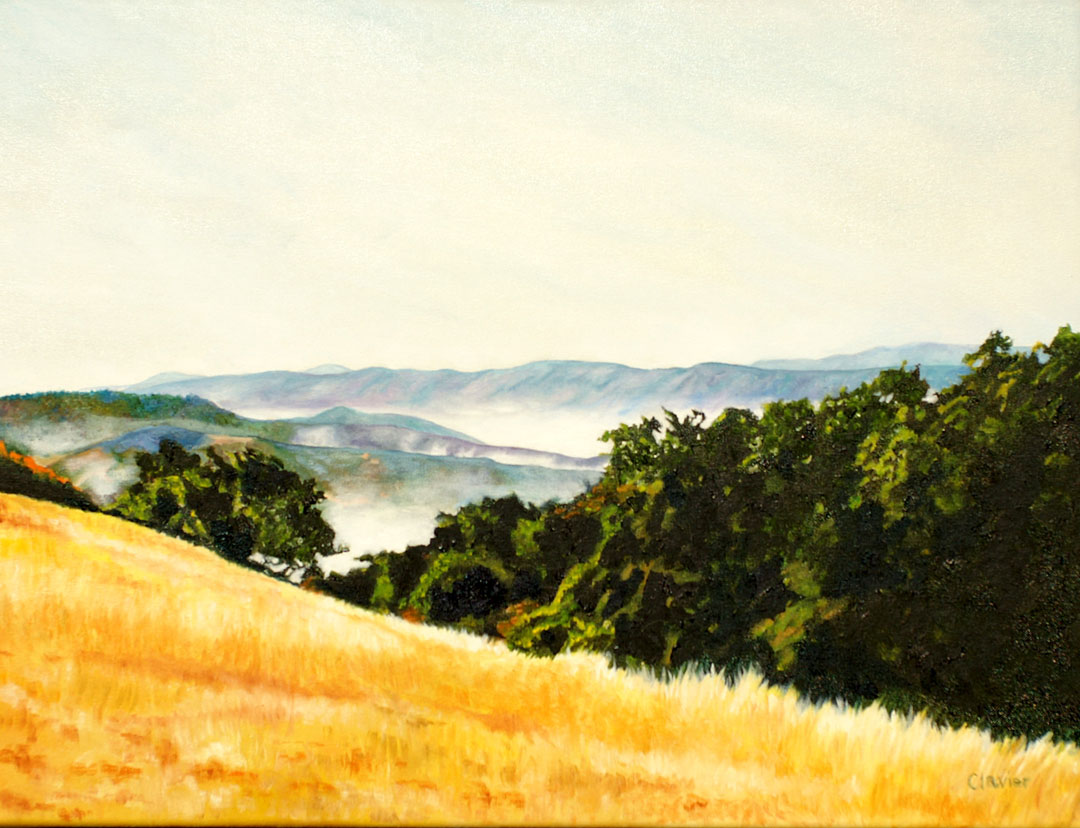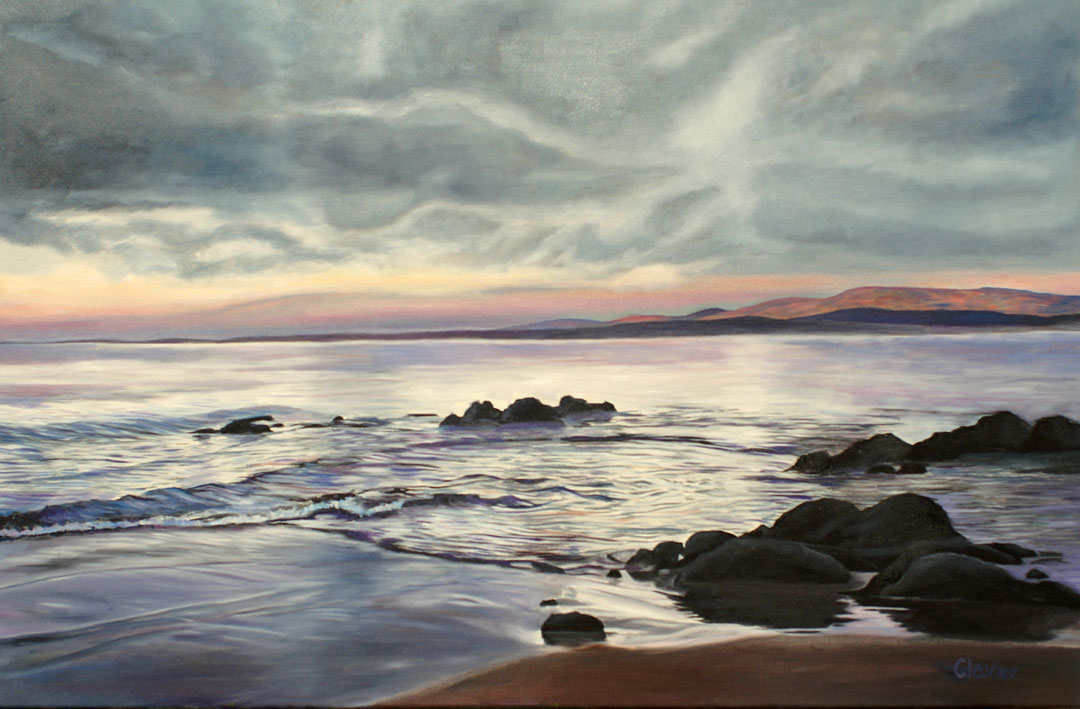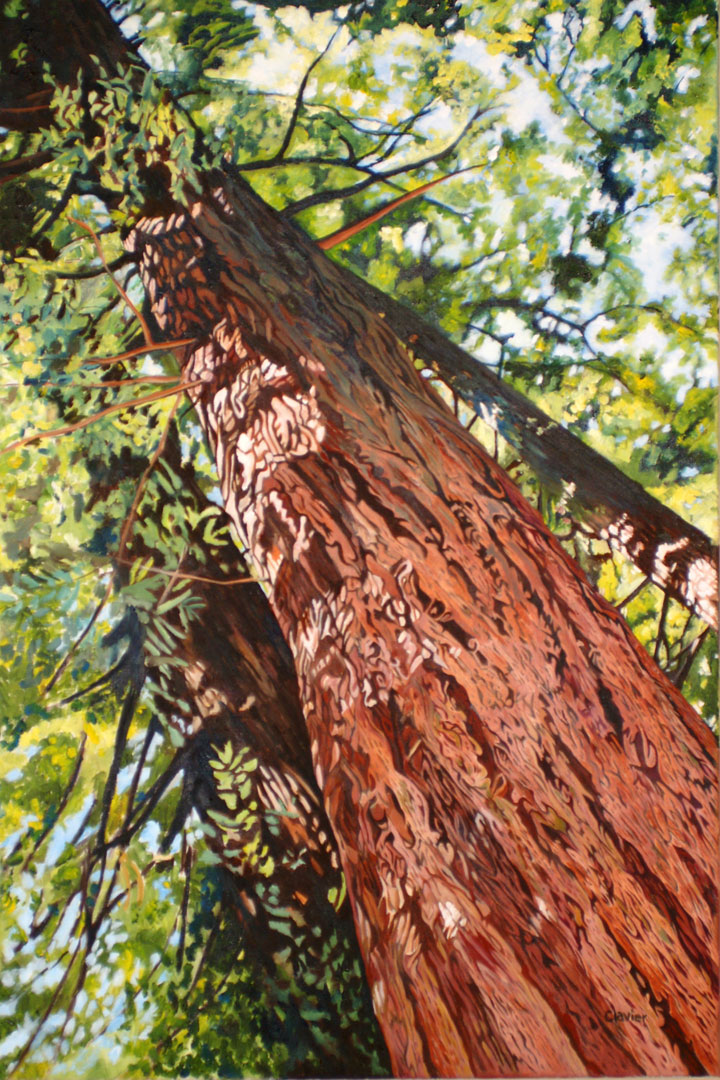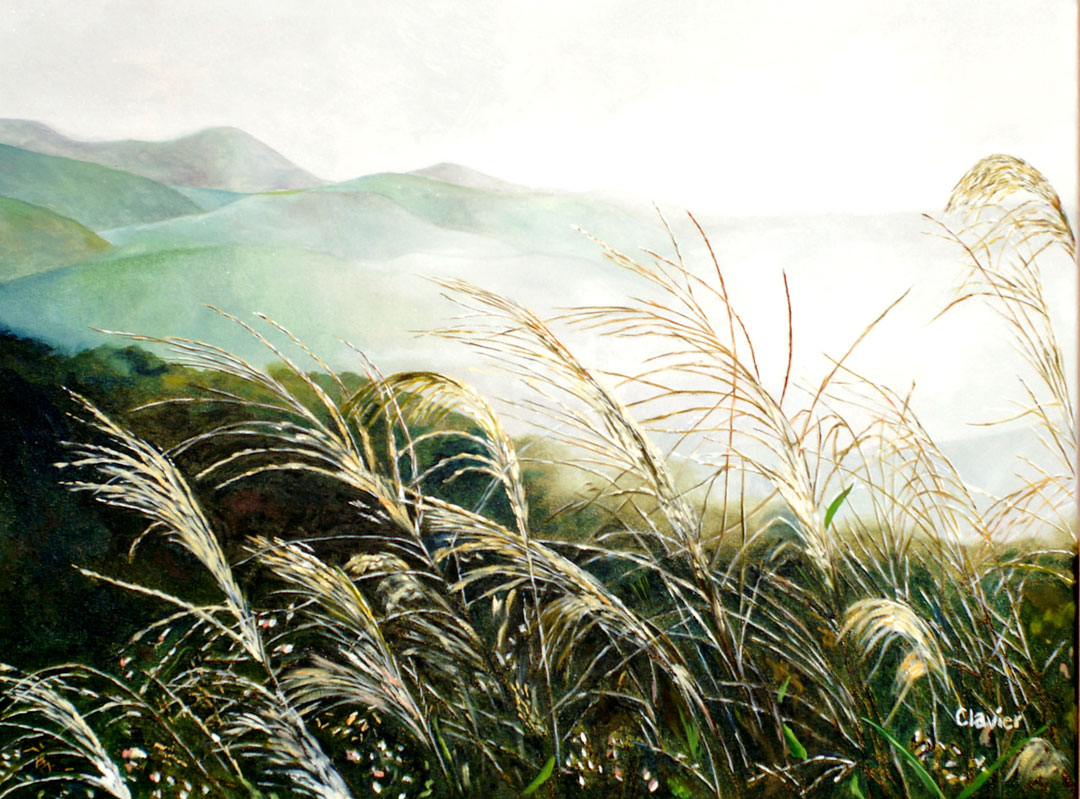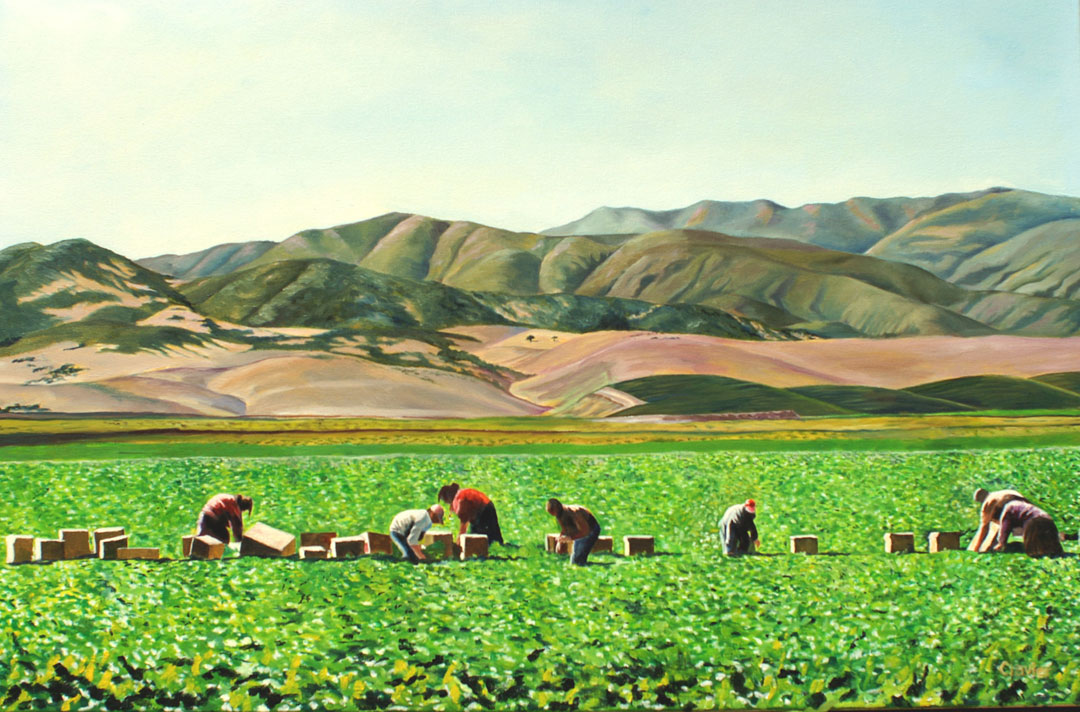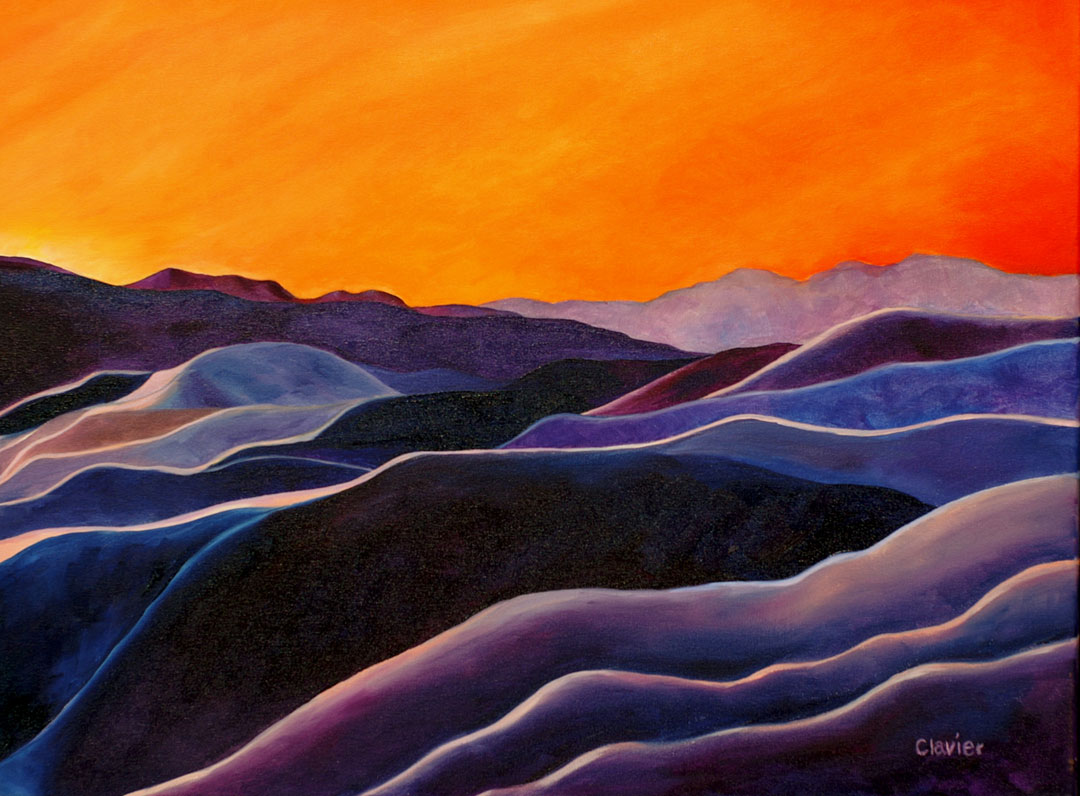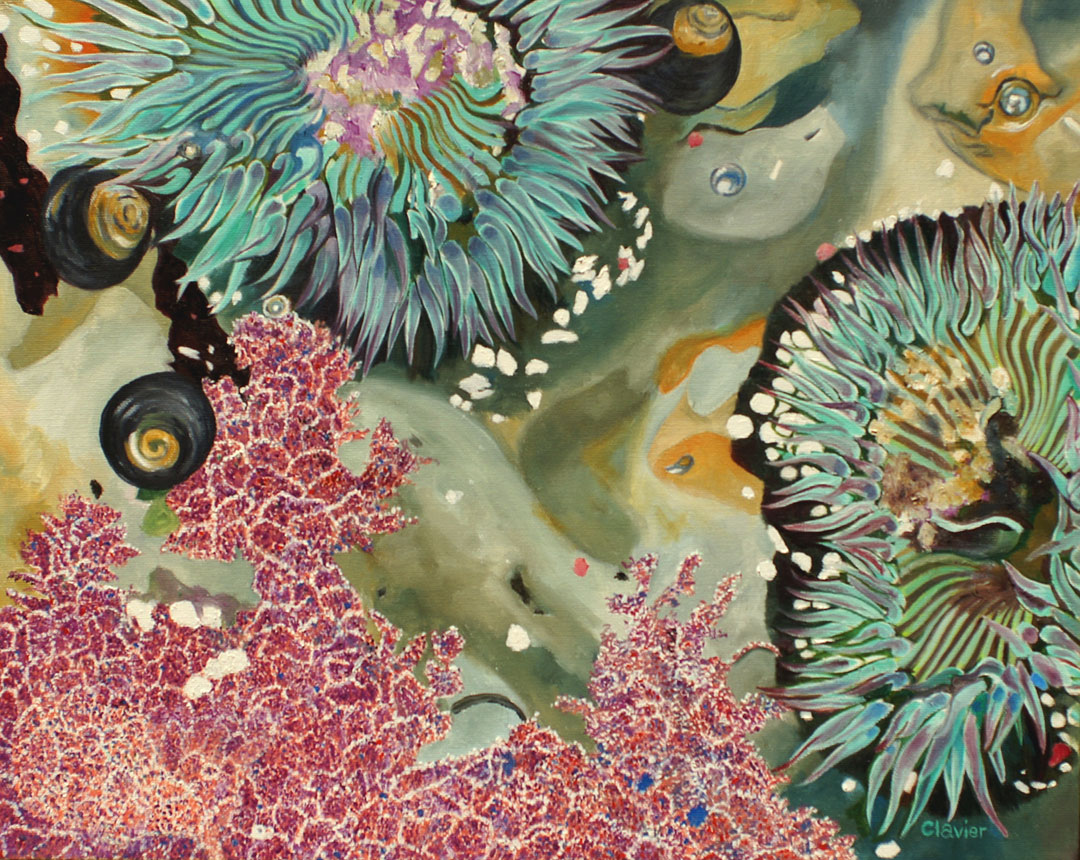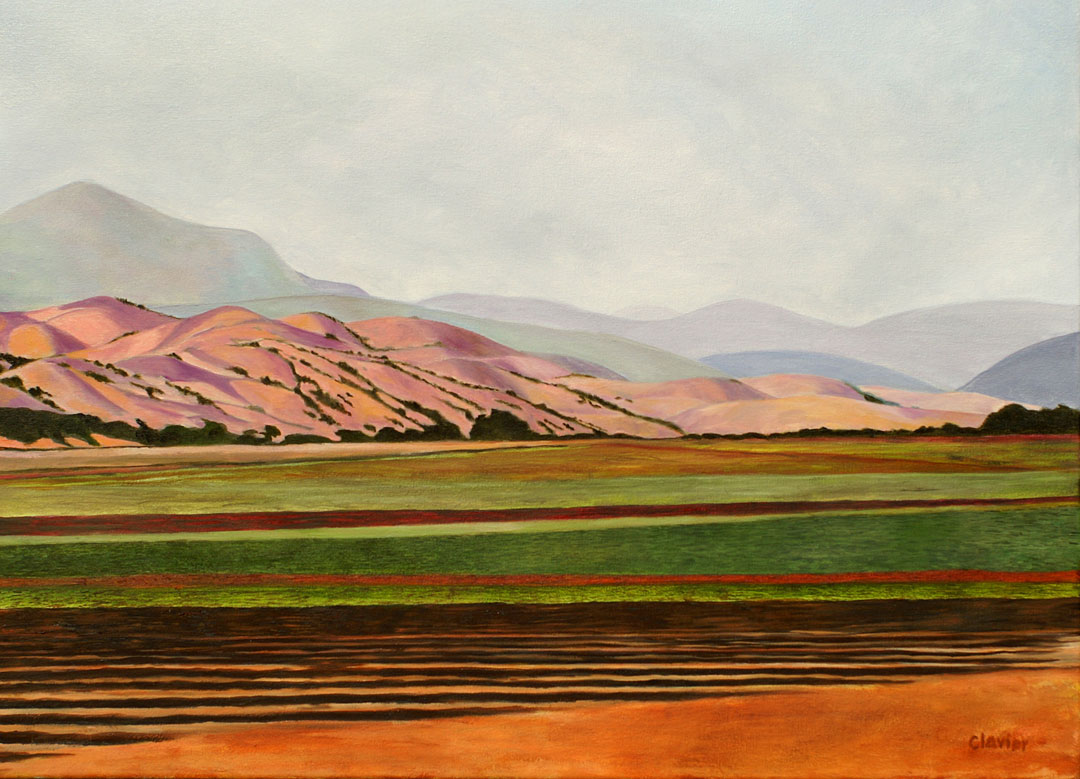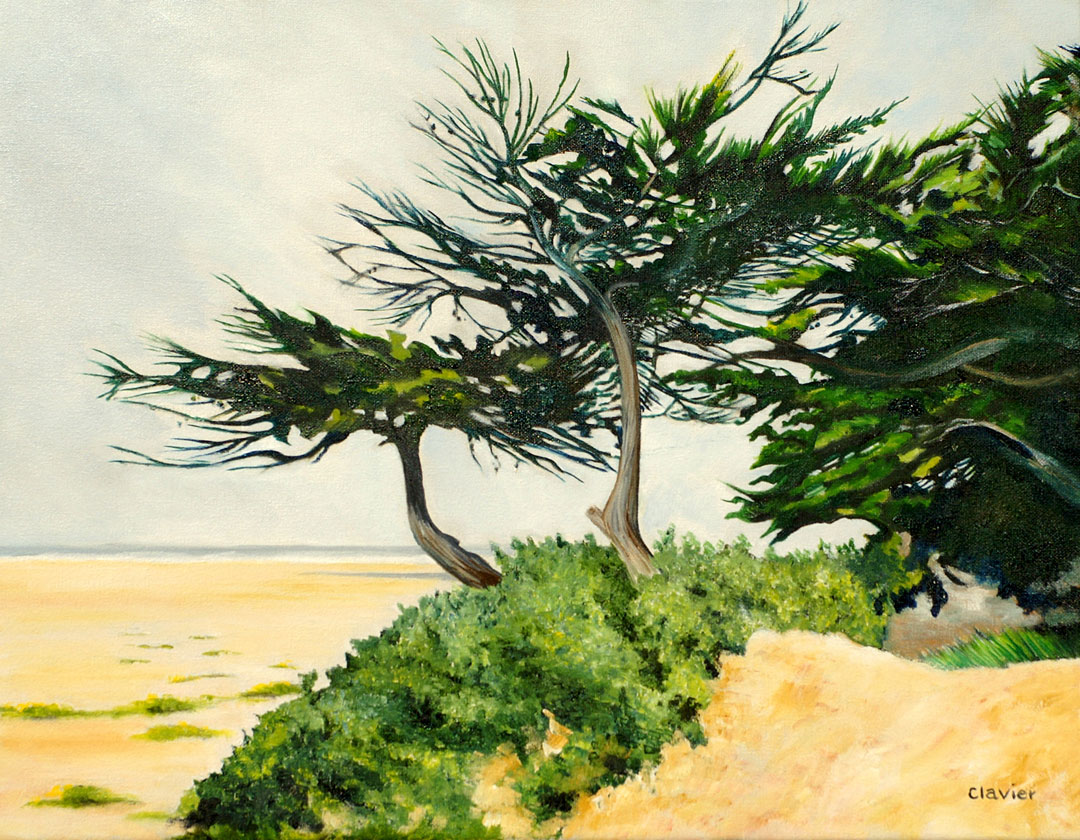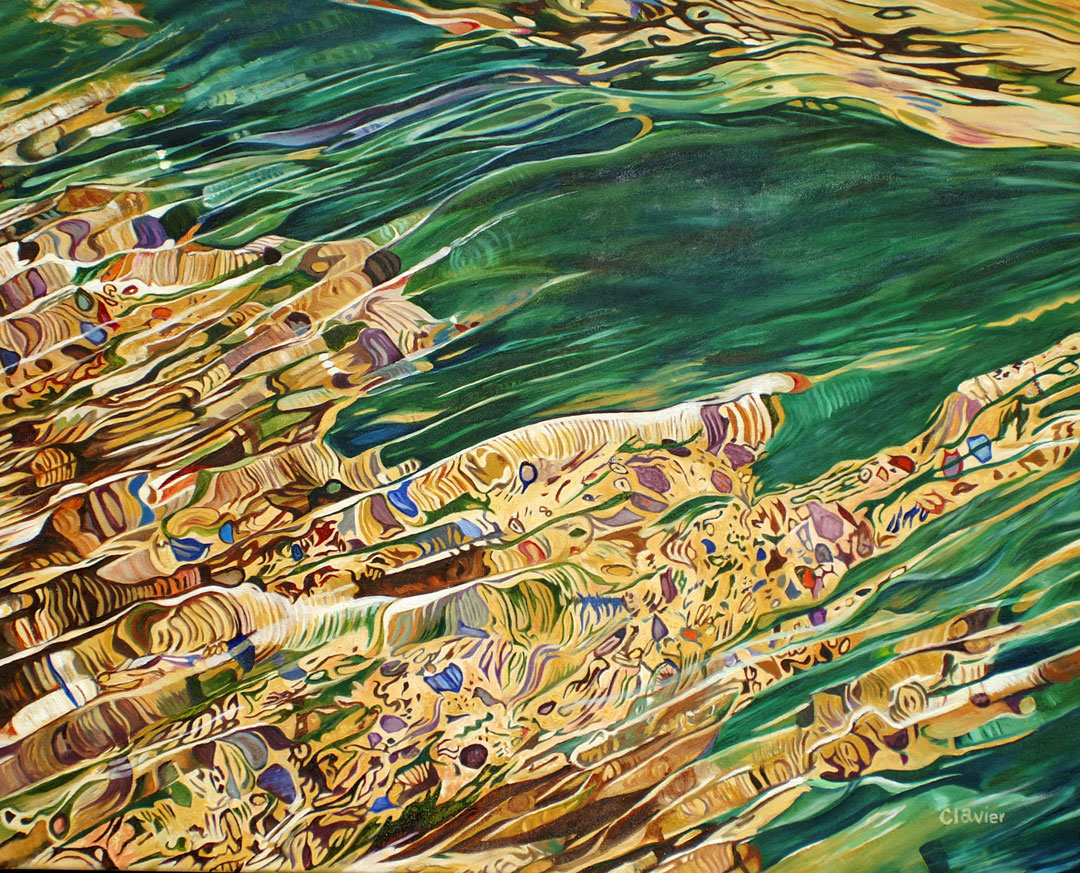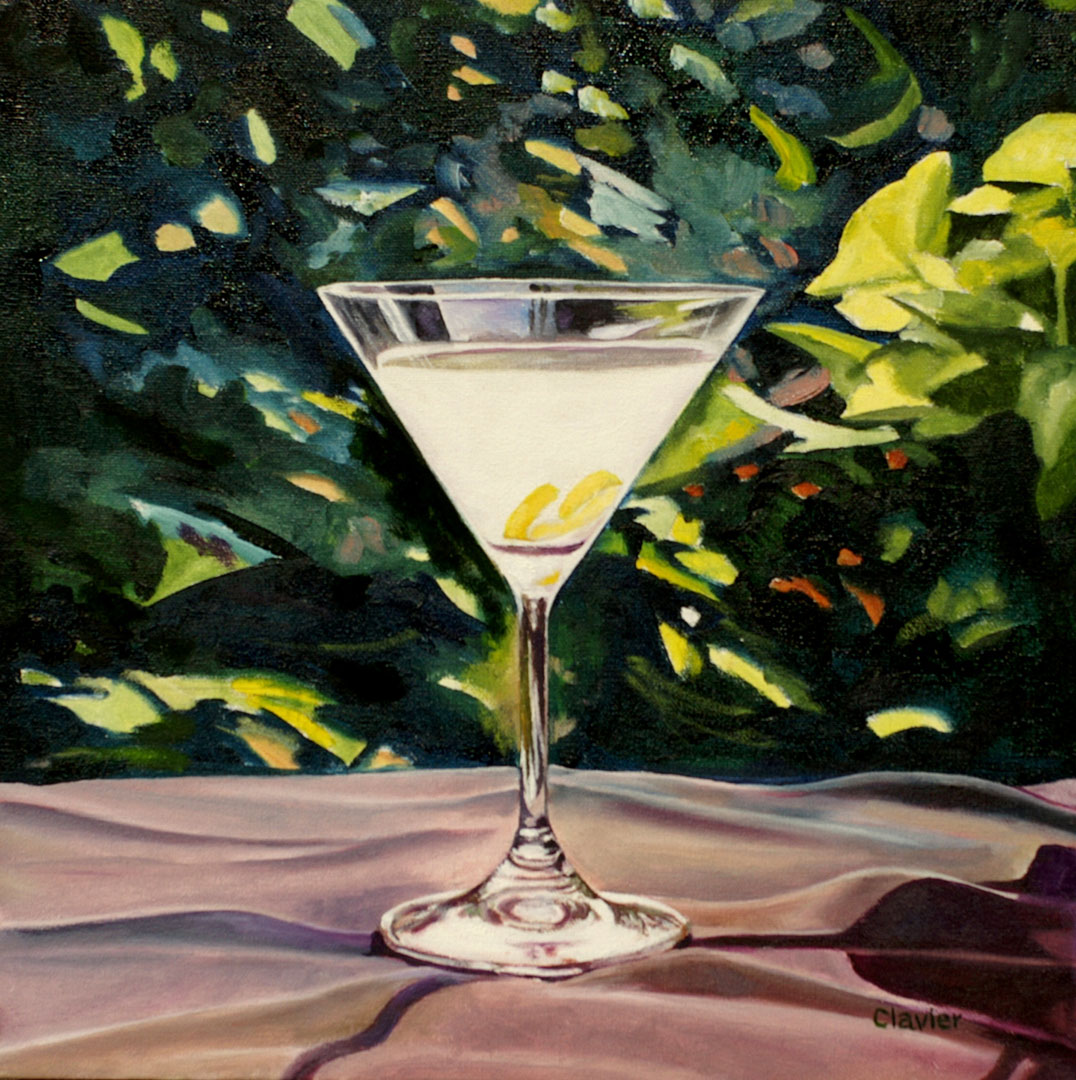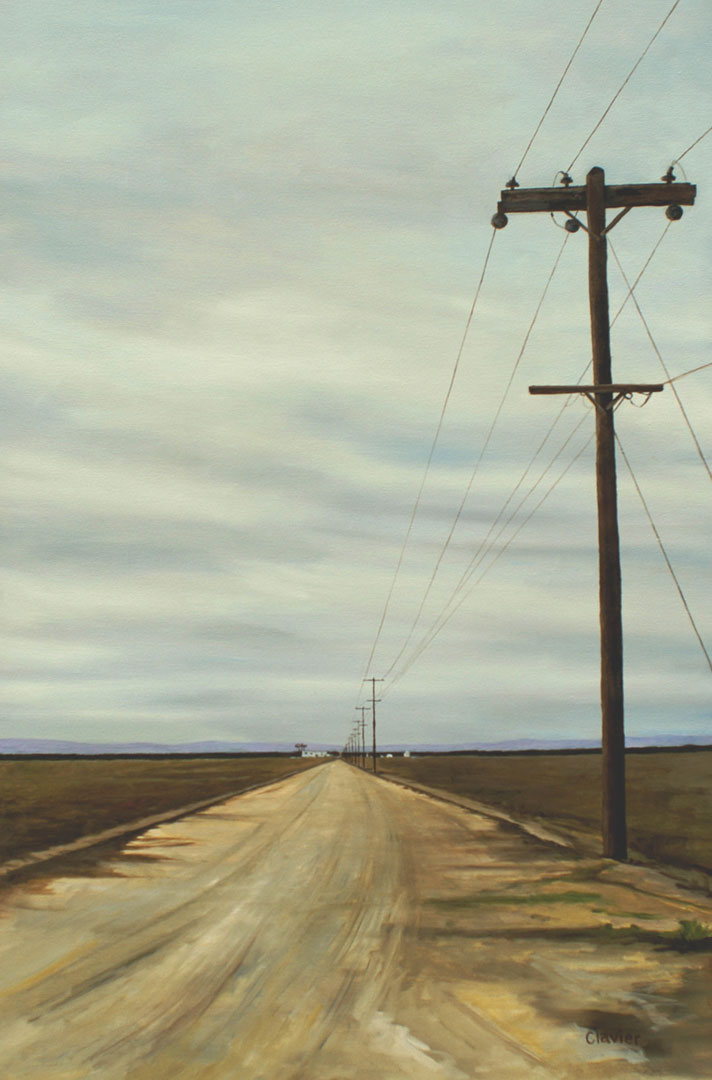 A picture can be worth a thousand words. But who knew that online paintings could be so popular at a website about a writer like John Steinbeck—or involve an actor like Woody Harrelson? Awe and Humility and Joy, a series of 24 online paintings inspired by passages from John Steinbeck and created on canvas by Ron Clavier, has become a frequently viewed feature at SteinbeckNow.com. Recently Ron, a successful artist who lives in Canada, made the generous gift of a painting from the series for sale to benefit San Jose State University’s Martha Heasley Cox Center for Steinbeck Studies. The Fallow Fields (shown here) will be exhibited during the May 9 and 11 performances of Ricky Ian Gordon’s Grapes of Wrath opera by the San Jose State University music school, along with information about how to participate in the bidding process for this large and evocative work. Woody Harrelson narrated the words from John Steinbeck behind each painting in Ron’s series, including this one. But hearing is believing. Listen to Woody Harrelson read the passage from The Grapes of Wrath that inspired Ron Clavier to paint The Fallow Fields below.
A picture can be worth a thousand words. But who knew that online paintings could be so popular at a website about a writer like John Steinbeck—or involve an actor like Woody Harrelson? Awe and Humility and Joy, a series of 24 online paintings inspired by passages from John Steinbeck and created on canvas by Ron Clavier, has become a frequently viewed feature at SteinbeckNow.com. Recently Ron, a successful artist who lives in Canada, made the generous gift of a painting from the series for sale to benefit San Jose State University’s Martha Heasley Cox Center for Steinbeck Studies. The Fallow Fields (shown here) will be exhibited during the May 9 and 11 performances of Ricky Ian Gordon’s Grapes of Wrath opera by the San Jose State University music school, along with information about how to participate in the bidding process for this large and evocative work. Woody Harrelson narrated the words from John Steinbeck behind each painting in Ron’s series, including this one. But hearing is believing. Listen to Woody Harrelson read the passage from The Grapes of Wrath that inspired Ron Clavier to paint The Fallow Fields below.
